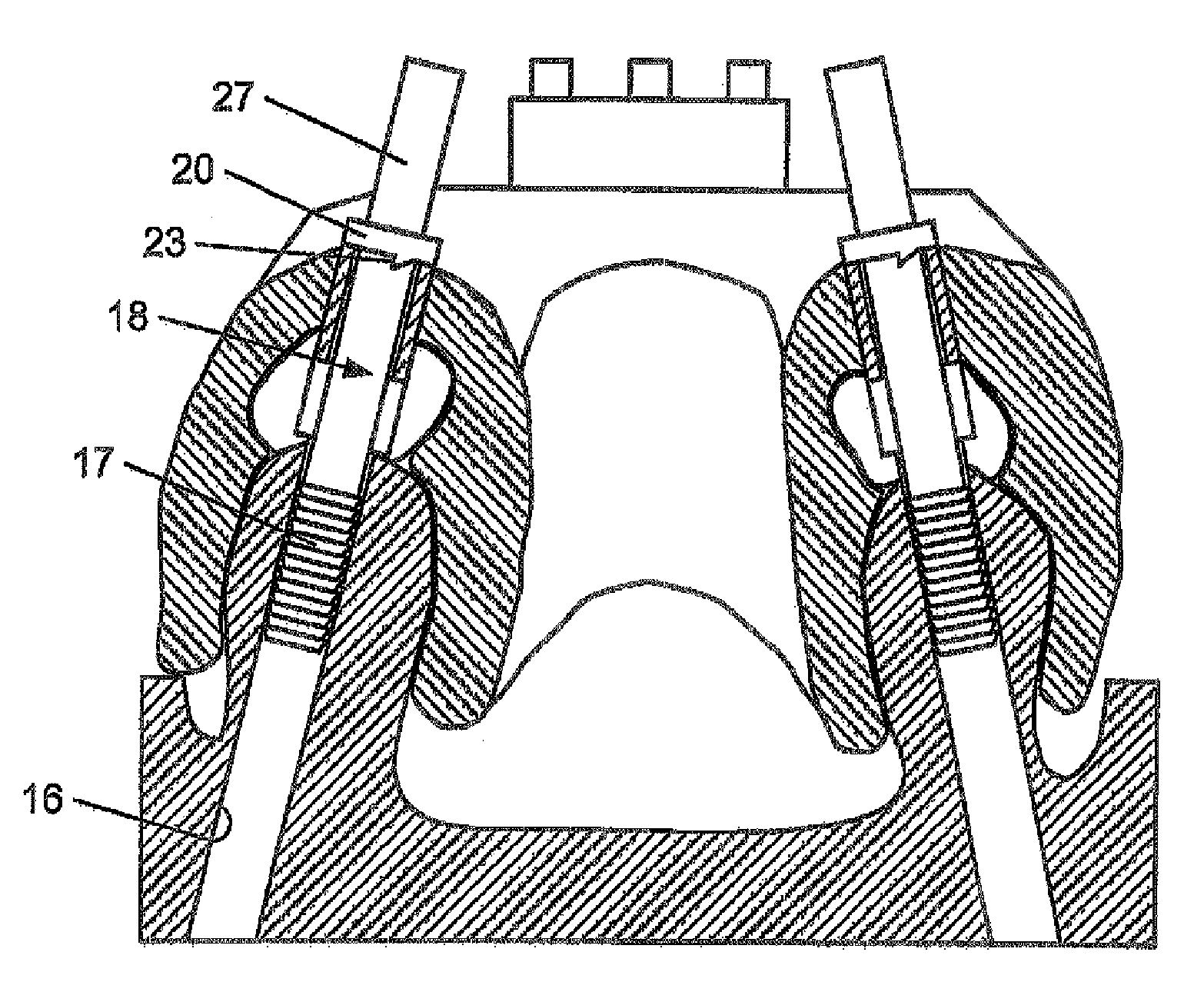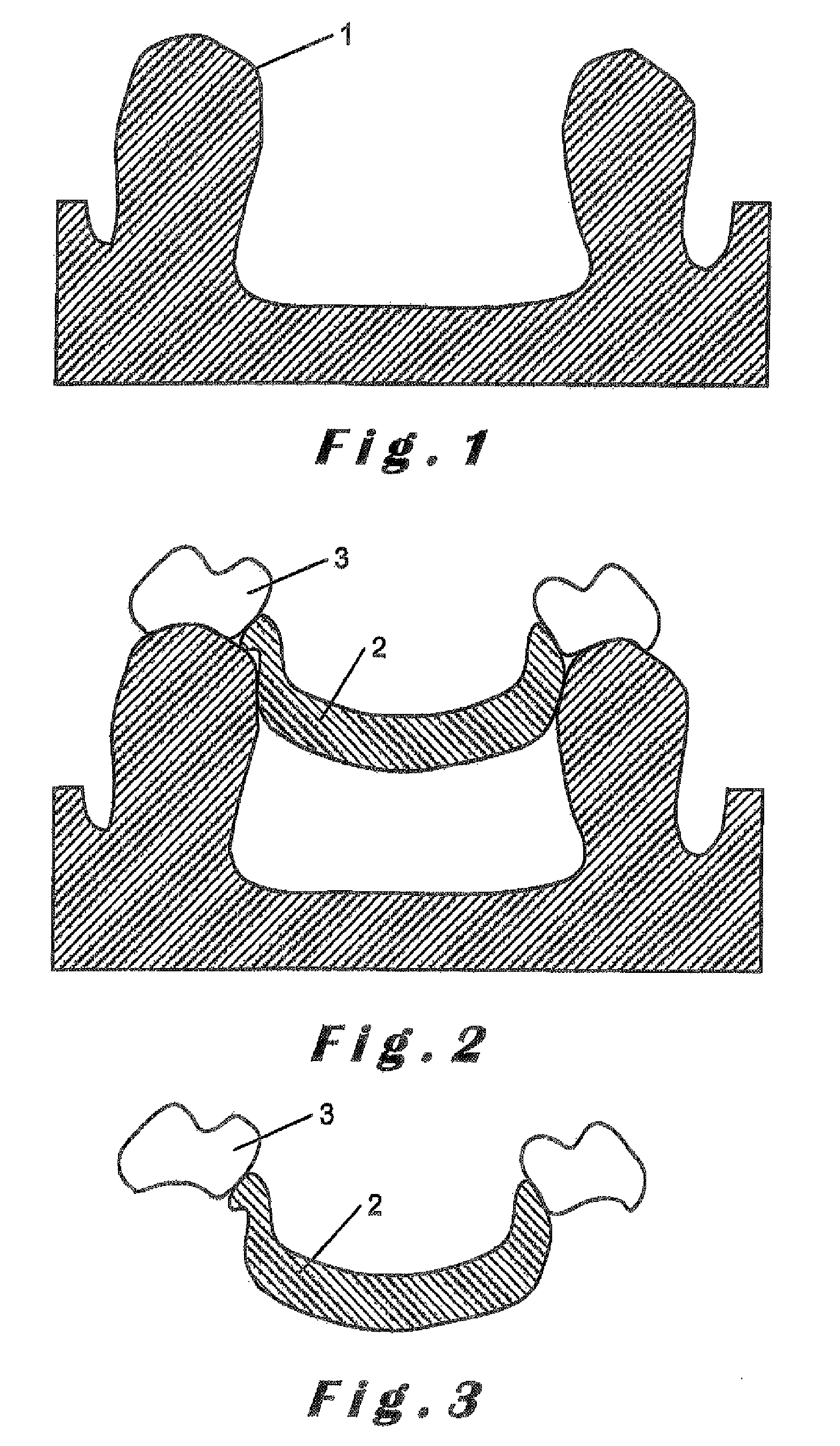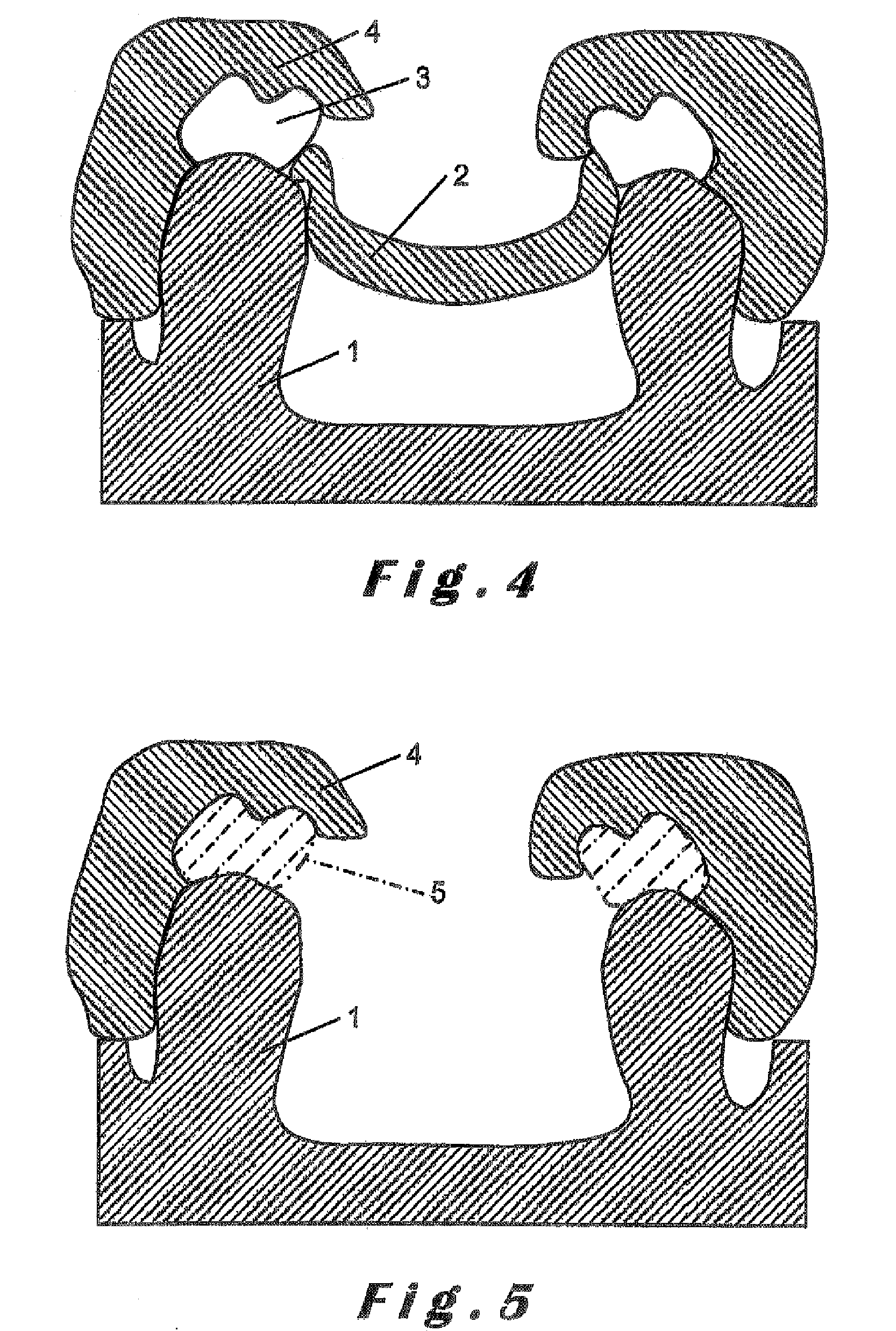Method for manufacturing a dental prosthesis and an appliance for implantation thereof
- Summary
- Abstract
- Description
- Claims
- Application Information
AI Technical Summary
Benefits of technology
Problems solved by technology
Method used
Image
Examples
Embodiment Construction
[0055]In the various drawings, the identical or similar elements bear the same references.
Production of a Radiological Guide
[0056]First of all a precise and non-compressive impression of the jaw of the patient is produced in silicone with moderate or low viscosity in order to obtain a three-dimensional mould of the gum and teeth. The same procedure is followed to obtain an impression of the antagonist of the jaw to be treated and thus a mould of this antagonist. From these impressions patterns made from hard plaster are cast, preferably three times for the pattern 1 of the jaw to be treated (see FIG. 1) and once for the antagonist jaw.
[0057]As is clear from FIG. 2, there is then produced on the pattern 1 a precise mounting (“wax-up”) by means of a mounting base 2 made from wax or resin and selected false teeth 3, which can be found on the market, for example under the trade name Physiodens. This mounting must prefigure with precision the prosthetic result and must therefore be tried...
PUM
 Login to View More
Login to View More Abstract
Description
Claims
Application Information
 Login to View More
Login to View More - R&D
- Intellectual Property
- Life Sciences
- Materials
- Tech Scout
- Unparalleled Data Quality
- Higher Quality Content
- 60% Fewer Hallucinations
Browse by: Latest US Patents, China's latest patents, Technical Efficacy Thesaurus, Application Domain, Technology Topic, Popular Technical Reports.
© 2025 PatSnap. All rights reserved.Legal|Privacy policy|Modern Slavery Act Transparency Statement|Sitemap|About US| Contact US: help@patsnap.com



